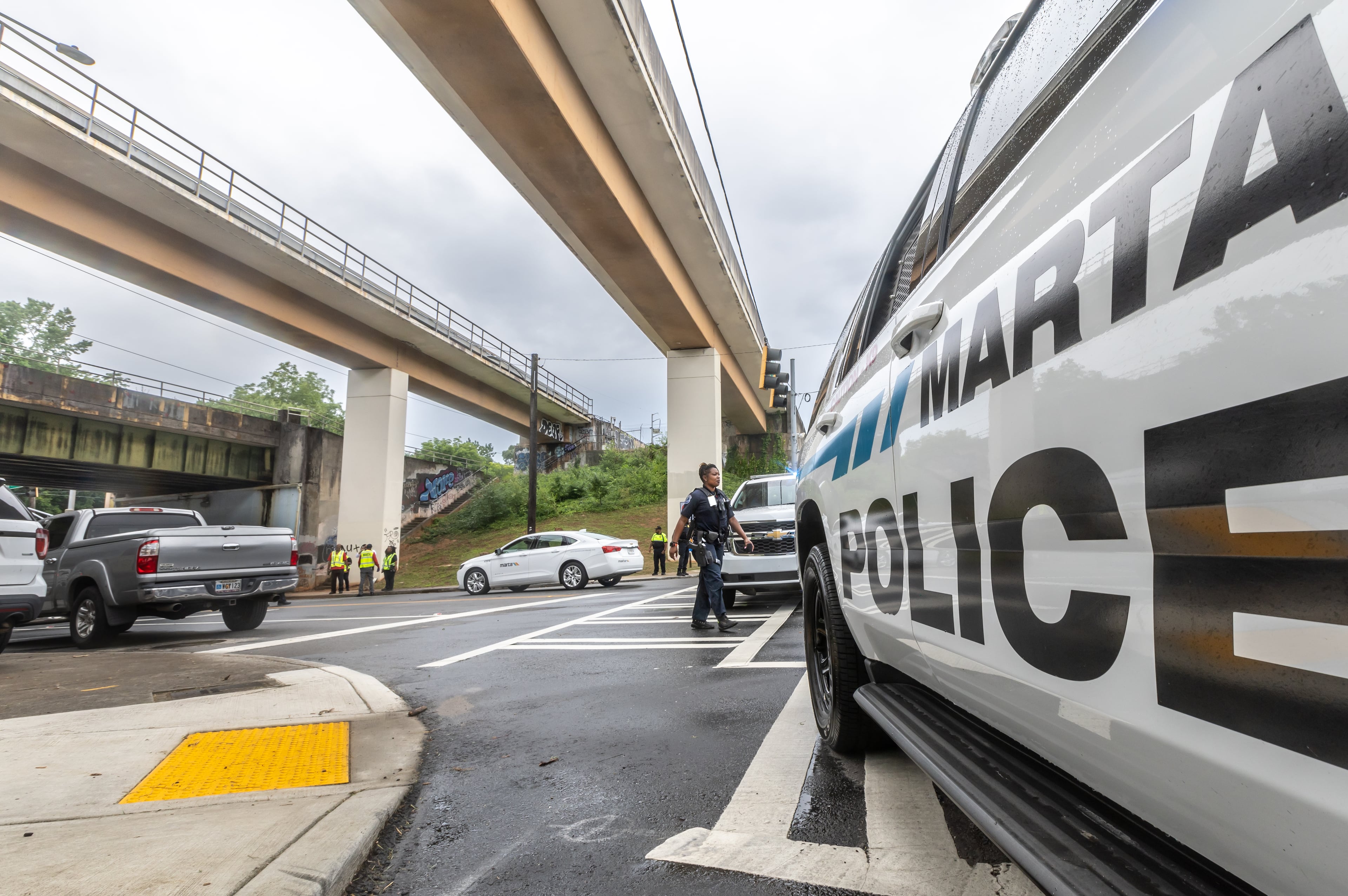Gridlock Guy: Treating the right of way the right way
"The right of way is given, not taken." My dad shared this saying with me some 25 years ago and I seem to remember him telling me this in the presence of my grandmother, who is an avid reader of this column. I found it so profound (or as profound as an eight-year-old can find something, anyway) that I presented it in my second grade show-and-tell session that week. My classmates found it less impressive. I'm sure someone with a new pack of Nickelodeon Gak stole the show.
» RELATED: Is the 'Tollercoaster' Atlanta's next 'Spaghetti Junction'?
Kurt, a regular Gridlock Guy reader, wrote me last week with a great list of suggestions for column topics and most had to do with the right of way rule on the Georgia roads. I am happy to oblige — and I welcome your suggestions any time, as well.
Arguably the most often application of right of way is in merging from a smaller road to a bigger highway. Merging incorrectly can create danger for cars both with and without the right of way. Here is what the 2018 Georgia Driver’s Manual states:
“When the roadway you are traveling on is merging into other traffic without stopping, adjust your speed and vehicle position to allow you to merge into the new lane safely.”
As you may have known, the traffic on the faster highway has the right of way. But in the spirit of “the right of way is given,” this oncoming traffic has equal responsibility. “If traffic from another roadway is merging into the roadway you are traveling on, safely change lanes away from the merging traffic if possible. If it is not possible to change lanes away from the merging traffic, adjust your speed and vehicle position to safely allow the traffic to merge.”
Right of way also very much comes into play at intersections. Very simply, traffic with a green light has the right of way. But the driver’s manual is very clear that proceeding under green is not an automatic right, without a previous application of common sense. “At intersections with traffic control lights, wait until the intersection is clear of traffic or approaching traffic before entering. Do not proceed ‘just because’ you have the green light.”
Also remember that turning right on red is only okay after coming to a complete stop and oncoming traffic leaves a safe gap. Do not impede or slow that oncoming traffic. Red lights always yield to green. The same holds true for flashing yellow left turn signals. Those beacons only permit that maneuver after the predominant, oncoming traffic allows it.
» RELATED: Decatur beginning right-of-way acquisitions for long-planned project
Four-way stops may be one of the most egalitarian times in traffic, so the driver’s manual spells out right of way in detail. “At a four-way intersection where all drivers are faced with stop signs, all drivers must yield to pedestrians; otherwise the vehicles should proceed through the intersection in a ‘first to arrive, first to proceed order.’ If two vehicles reach the intersection at approximately the same time, yield to any vehicles on your right.”
And the manual urges absolute common sense. “If another driver tries to take your turn, even if you have the right-of-way, let the other driver proceed. It might prevent a traffic crash.” The right of way is given, not taken, yes.
Pedestrians always have the right of way. If they have the “walk” signal in a crosswalk, they get to walk, even if vehicles have a green turn signal in that direction. This is obviously for safety reasons. And if they are jaywalking, drivers are still required to slow down and be safe around them. Cars almost always win the battle against people on foot, if they connect. We need to drive with that truth in mind.
Illuminating one’s turn signal does show the intention to turn or change lanes, but it does not afford the right to do so. Drivers already in the right of way position must allow that to take place. The desire to do something does not create the right to it — imagine if society worked that way.
We discussed roundabouts two columns ago, and the right of way in those is very simple: whatever traffic is already in the traffic circle has the right of way. This very similar to the rules of merging onto highways.
The basic premise of the "right of way" is to settle traffic "tiebreakers" and make the roads safer. But the right of way is not an entitlement. Driving without entitlement might be the biggest salve to our overall traffic pain. If drivers practiced both yielding to and having the right of way correctly, the whole traffic ecosystem would flow much better. And we would feel better, too.
» RELATED: What to do at an intersection when the power goes out
Doug Turnbull, the PM drive Skycopter anchor for Triple Team Traffic on News 95-5 FM and AM-750 WSB, is the Gridlock Guy. He also writes a traffic blog and hosts a podcast with Smilin’ Mark McKay on wsbradio.com. Contact him at Doug.Turnbull@coxinc.com.

